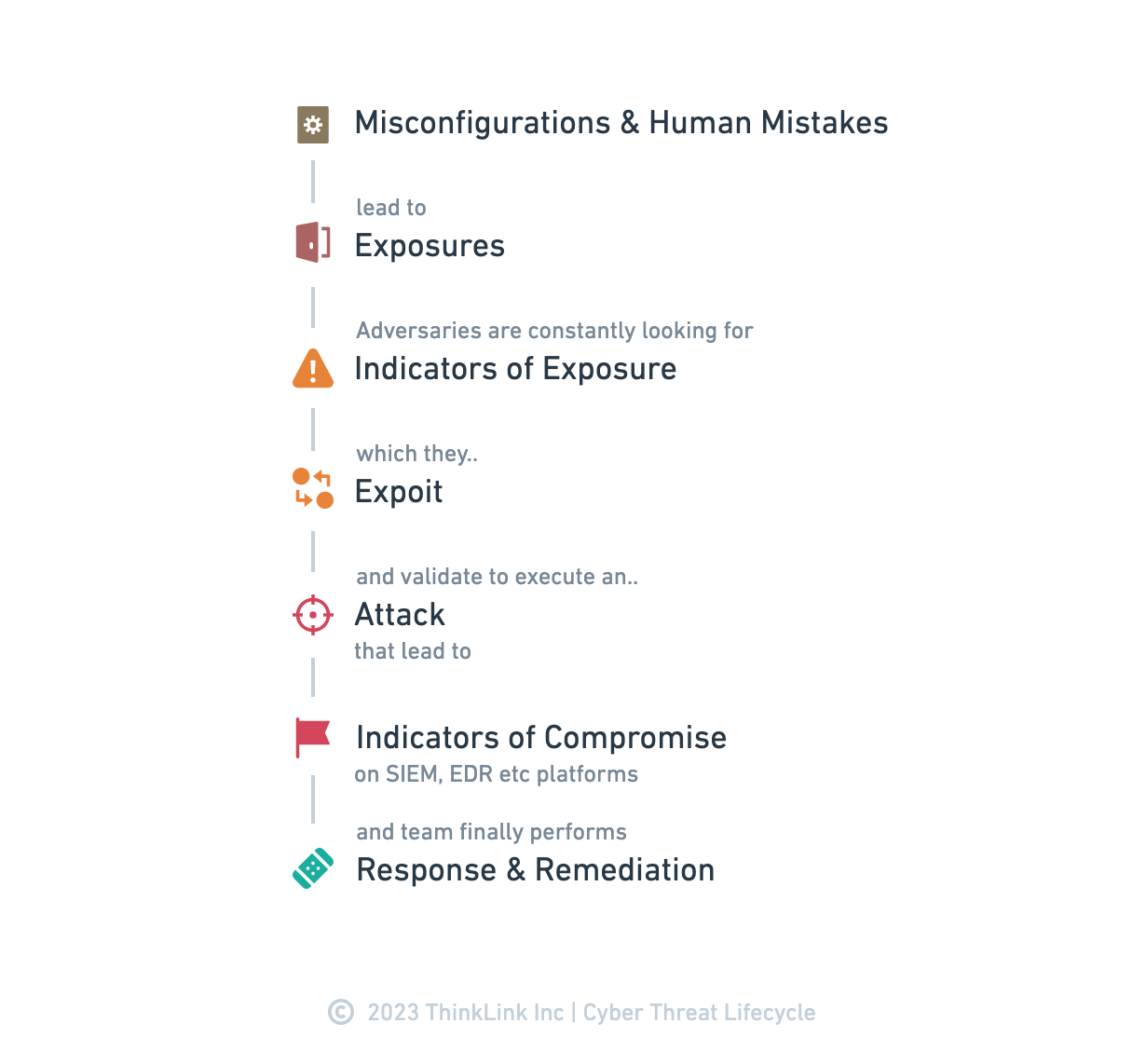Cybersecurity threats have been on the rise in recent years ,and it's essential for individuals and organizations to be aware of the different steps involved in the Cyber threat lifecycle. The threat cycle typically involves seven steps as defined below.
The first step in the cyber threat cycle involves misconfigurations and human mistakes.
This includes anything from incorrect security settings to unsecured network configurations. Exposures occur when the attackers exploit these misconfigurations and mistakes.
Once attackers find these vulnerabilities, they start to look for indicators of exposure, which can include anything from usernames and passwords to network traffic data.

Adversaries then validate these indicators of exposure with exploits, which can be anything from phishing attacks to malware injections. Once validated, they execute an attack and compromise the system. At this point, indicators of compromise are detected on cybersecurity platforms, which triggers a response and remediation plan.
However, as mentioned earlier, this response often comes too late, as the damage has already been done. This is why it's important for individuals and organizations to focus on steps one through four and perform these steps internally to catch indicators of exposure before they turn into indicators of compromise.
External attack surface management (EASM) is a solution that can help organizations perform steps one through four of the cybersecurity threat cycle to catch indicators of exposure before they turn into indicators of compromise. EASM involves identifying and monitoring an organization's external attack surface, which includes all the digital assets and online presence that are accessible from the internet.
ThinkLink Horizon can provide comprehensive visibility into an organization's external attack surface, including web applications, APIs, cloud services, digital assets and other digital footprints. By identifying and monitoring these assets, EASM platforms can help organizations identify misconfigurations, vulnerabilities, and other indicators of exposure that can be exploited by attackers.
In addition, Horizon can provide continuous monitoring and alerting capabilities, which can help organizations stay informed of potential threats and respond quickly to incidents. By proactively identifying and addressing indicators of exposure, organizations can significantly reduce their risk of experiencing a compromise and mitigate the impact of any security incidents that do occur.
With Horizon, continuously monitor and detect indicators of exposure before they turn into indicators of compromise -- which often turn out to be extremely expensive to the organization.